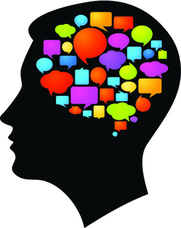 By Natalie Nagpal The acquisition of language is a phenomenon that is highly impressive yet not completely understood. While there is no one mechanism or section in the brain that controls how we learn language, the process is linked with the overall executive function of the brain. As the world becomes more culturally intertwined, more combinations of races are raising children. Due to this, the number of bilingual people is also increasing. A census found that the number of Hispanics who speak Spanish at home from 1980 to 2000 increased by 14.5 million people, indicating that more children are learning the language. In a recent study conducted at Northwestern University, researches found that the encoding of sound done by bilinguals is linked with advantages in executive function. By being a bilingual, the brain leans to suppress the language that is not in use or being heard. Due to neural plasticity, this subconscious function of suppression exercises the brain in a way that a monolingual will never experience. Within the brain of a bilingual individual upon hearing a word, the meaning of that word in both languages is activated. This exercises the brain and studies have found that bilingual people show symptoms of Alzheimer’s on average 5 years later than monolingual people. This does not mean that being bilingual protects you from Alzheimer’s, but instead that bilinguals brains are more capable of dealing with the diseases damage on the brain. Any kind of sensory enrichment will improve the brains executive function and cognitive processes. It is important that we continue to enforce the importance of being bilingual so that our children can continue to evolve their brains in this ever changing world. Sources: http://www.pnas.org/content/109/20/7877.abstract http://www.pewhispanic.org/2004/03/19/bilingualism/
0 Comments
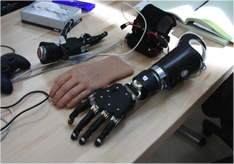 By Angie Miller Like working in a lab? Analytical? Communicate well? Team player? Biomedical engineers are a branch within the engineering field. The growth increase for biomedical engineers in the next ten years is about average at 3-6%. The median salary of a biomedical engineer in the United States is $90,580. From designing, testing, postulating, and reporting, biomedical engineers apply their solving skills to improve products in daily life. Work environment for biomedical engineers is usually a standard 40-hour week in an office building, laboratory, or industrial plant. Biomedical engineers may work longer hours when deadlines are involved. Generally biomedical engineers conduct experiments, develop statistical models, prepare reports, and devise plans for further improvement and action. Education for biomedical engineers consists of a variety of natural sciences including physics, chemistry, and biology along with mathematics. Usually biomedical engineers require a Bachelor’s degree for entry-level positions. For upper-level positions such as teachers or research, graduate degrees are required. Engineers that are directly involved with the public have to become licensed. With the changing technology, biomedical engineers must continue to educate themselves. Personality skills that are important for biomedical engineers include curiosity, great ability to solve problems, and working well with others. Similar careers to biomedical engineers are chemical engineers, biochemists, and biologists. http://www.sciencebuddies.org/science-engineering-careers/engineering/biochemical-engineer#keyfactsinformation 1/23/2015 0 Comments “Touchable” 3D Holograms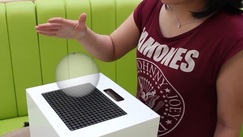 By Kaitlynn Bayne Researchers at the University of Bristol’s (Bristol, England) Department of Computer Science have recently published a research paper where they reveal a new method they have created to produce holographic 3D images that can be felt. Simply put, this method uses ultrasound- which focuses on hands above the device and can be felt. The use of ultrasound allows the image to be seen, and creates disturbances in the air, which are what can be felt. This is how these 3-D holograms can be “touched.” These holograms could be very useful in many different fields. The technology specifically could aid in the classroom, especially in cases where the class is looking at artifacts, sculptures, or anything else that could be better understood by having it physically present. Another benefit, according to Dr. Ben Long, Research Assistant from the Bristol Interaction and Graphics (BIG) group in the Department of Computer Science, the “touchable” holograms could be of great help specifically when working with objects that aren’t usually tangible. Specifically, he states that one of the lab’s idea is the ability “[to feel] the differences between materials in a CT scan.” If this idea were to become a reality, doctors would be able to tell if you had a tumor based on the feel of the CT scan’s 3-D holographic image. This paper has only recently been published, so it is clear that this technology is not quite where it needs to be to get on the market quite yet. However, when it does, it could change the face of both the classroom and the hospital alike. Research:http://spaceindustrynews.com/engineers-have-invented-touchable-3d-holograms/4820/ 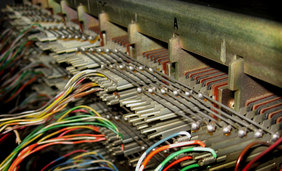 By: Angie Miller Physically fit? Have good coordination and balance? Interested in electrical objects? Electricians are a branch within the physical sciences field. The growth for electricians in the next ten years is high in demand at 21% or more. The median salary of an electrician in the United States is $49,320. From bringing electricity to homes, schools, businesses, and the public, electricians light up the world. Work environment for electricians is usually a 40-hour week outside and indoors, construction sites, homes, and business or factories. Work can be physically demanding lifting heavy objects or being subject to electrical injuries. On the job focuses on maintaining or installing the wiring, fuses, and other electrical components. Generally electricians repair, assemble, test, and inspect all electrical systems and components. Education is focused on classes with a wide variety of information including physical sciences, mathematics, computer science, and English. Electricians are usually required to have a Vocational or Associate’s degree. The majority of electricians get their training and experience through apprenticeship programs that last roughly four years. Each year is at least a combination of 144 hours of classroom instruction and 2,000 hours of actual experience. Electricians generally have to pass exams to become licensed and also continue to get trained in courses such as safety throughout their career. Personality skills that are important for electricians include good hand-eye coordination, balance, and manual dexterity. Similar careers to electricians are computer repairers, avionics technicians, and model makers. http://www.sciencebuddies.org/science-engineering-careers/earth-physical-sciences/electrician#keyfactsinformation 1/12/2015 0 Comments Google Glasses- Are We Ready?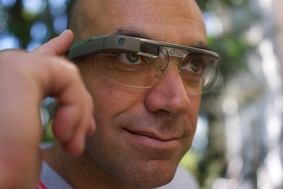 By Kaitlynn Bayne When the first announcements came out about the Google Glasses, nobody could get enough of it. The sci-fi future fantasy was becoming reality. But Google Glasses have a long way to go before we will start seeing everyone walking around in them. Last year, I had the opportunity to try one of the first models of the glasses. I waited in line for nearly 20 minutes as person after person tested out the glasses, and inevitably, took “selfies” in them. The anticipation was killing me, but I finally got my turn with the glasses. I was given a command to do a Google search. After I gave the command, results appeared on the small screen located on the top right of the glasses. I’ll admit it, I thought it was super cool and tried out a few commands before letting the next person try them on. After trying out the glasses, I began to think of how weird it would be to see people walking down the streets with Google Glasses on. I wouldn’t call them the most visually pleasing, as there is a visible screen/camera device on top of the right lens. But even more importantly, they seemed like a very easy distraction. I started to think about what would happen if people wore these while driving. It seems like the results would be very similar to what happens when people text and drive. Some research has proven that Google Glasses do, in fact, cause some disruption to vision. A recent study at UCSF found that the glasses disrupt the peripheral vision of the person wearing them due to the prism (the screen/camera device I mentioned earlier). Although it isn’t what I had initially thought of, it would be a very dangerous part of wearing them. It isn’t very practical to have a blind spot hindering one from their daily activities. So this begs the question: are we, as consumers, ready for Google Glasses? Personally, I think Google should take their time to come up with a few more models with more consideration to safety. And hey, maybe by that point, the sci-fi look of the glasses will be in style! Source:http://www.foxnews.com/science/2014/11/04/google-glass-blocks-peripheral-vision/ 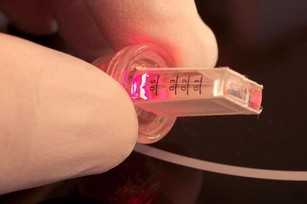 By Claire Wiggins Although it sounds like something from science fiction, researchers at the department of Biosystems (D-BSSE) in Basel have designed a new method of gene regulation that allows brain waves generated by certain thoughts to express genes. "For the first time, we have been able to tap into human brainwaves, transfer them wirelessly to a gene network and regulate the expression of a gene depending on the type of thought. Being able to control gene expression via the power of thought is a dream that we've been chasing for over a decade," says Martin Fussenegger, Professor of Biotechnology and Bioengineering at Basel. Brainwaves are recorded with an EEG headset, and they are then analyzed and transfered wirelessly to a controller. The controler then alters a magnetic field, which induces a current in an implant. An LED light then turns on in the implant, illuminating a culture of genetically modified cells. When the cells sense the light, they begin to produce the desired protein, or express the gene of interest. This study has also been tested successfully in mice. This new method of controlling gene expression is not only unique in its method, but in its simplicity. The near-infrared light is not harmful to cells, and a SEAP protein was used, which is easy to detect and diffuses from the culture chamber into the mice bloodstream. Since the system works well in human-cell culture and in human-mouse models, there is promise that this technology may serve as a treatment for medical conditions in the future. One day, a thought-controlled implant could help with headaches, other pain, and even epilepsy by detecting specific brain waves and producing or suppressing the creation of certain agents in response. Source: http://www.sciencedaily.com/releases/2014/11/141111111317.htm 1/12/2015 0 Comments DiabeGone?By Trishanya Raju What would you say if I told you that there is a drug that has been tested on mice, and succeeds in not only preventing them from getting Type 1 diabetes, but also actually reverses the condition if it is pre-existing? Yes, you read me correctly. This drug could be a potential cure for diabetes. How could it be, you ask? Well it started with a discovery made by Dr. Anath Shalev, of the University of Alabama. Dr. Shalev discovered that Verapamil, which is a calcium channel blocker used to treat hypertension, lowers the level of the protein TXNIP (thioredoxin-interacting protein) in pancreatic beta cells. High levels of thioredoxin have been shown to keep the pancreas' insulin-producing islet beta cells functioning. She then suspected that maybe suppressing TXNIP could be the way to fighting diabetes, and ensuing tests on rodents and islets isolated from humans have only supported her idea. The drug is now moving into clinical trials, which will involve 52 newly diagnosed patients with diabetes, half of whom will be put on verapamil and half on a placebo. “We have previously shown that verapamil can prevent diabetes and even reverse the disease in mouse models and reduce TXNIP in human islet beta cells, suggesting that it may have beneficial effects in humans as well," Shalev said, announcing plans for the clinical trials. Although there is still a significant amount of progress to be made before we can actually claim that Verapamil is a cure for the plague that we call diabetes, I’m hopeful as to its prospects, and potential. 1/7/2015 0 Comments Palliative Care InterviewBy Saara Mohammed
I interviewed a physician about the thoughts I’ve been putting out on the blog about palliative care, end of life care, and the role of health professionals in that area of health care. The interview cleared up a lot of my confusion, but also clarified a lot of claims I feel I made (maybe prematurely) in past posts. The part one of the interview follows: Disclaimer: The responses are a single internal medicine physician’s experience and views. This interview has been condensed and edited. - So if you were to sum up a social worker’s role in end of life care, what would it be? (I started the interview talking about social workers) - To be honest, they’re usually not really involved in end of life care. That’s mainly doctors and nurses or visiting doctors and nurses that work in hospice. The social worker mainly sets up hospice if the patient is dying and has been in a nursing home or the family doesn’t want to take the patient back home. They arrange for nursing homes to take the patient on for hospice care. - Can you think of any times where there has been conflict between those involved and the decisions being made? - Sometimes conflicts arise when family members have to make decisions about keeping the patient comfortable. If the patient doesn’t have a will or power of attorney, they have legally documented statements on what to do if something happens to them. Sometimes the children or family have other ideas, and then there’s a conflict over how to treat the patient, and continue to make the patient comfortable. There is also the option of appointing a person to make decisions in case the patient can’t make decisions. If the patient is very sick and the family doesn’t know what to do, or if there are too many family members involved who don’t know what to do, a social worker is called in. This is just part one, and I already felt that a lot of my perceptions of the actual problem I thought was at the root of lacking end of life care, had changed. Part two discusses the interaction between social workers and physicians, and how the decision is made to transition a patient to a hospice care. By Jennifer Wardell
It's Valentine's Day. You wake up to the smell of bacon and pancakes. You can smell roses in the room. Everything has a smell and these smells cause different feelings. You're now happy to have breakfast being cooked for you and you start to feel hungry. The roses make you reminiscent of all of the past years and all the times you have gotten flowers. All of your senses are attached and the smell of something can trigger all types of emotions, especially for women. A recent study in Rio de Janeiro tried to figure out the reason behind why women have a better sense of smell than men do. They examined post-mortem brains of both males and females and found that females have up to 50% more olfactory neurons. This finding does not prove that women have a superior sense of smell, but it does provide some support for the hypothesis. In general, larger brains with more neurons lead to more complexity, so it makes sense if women have more olfactory bulbs that they will have more olfactory sensitivity. It is also true that the brain does not accumulate many more cells as we grow, meaning that women are born with these extra cells. There are multiple theories for why women would have this stronger sense of smell, but at this time none have been proven. Possible ideas include that it would help with motherhood or choosing an ideal mate. So next time you smell something really good, think about all of the times you have smelled it before and be thankful for your sense of smell. Think about smells from your childhood, from previous cities where you have lived, both good and bad smells. Think about how awesome it would be if Google Nose really was a real thing instead of an April Fool's Joke. The sense of smell is a gift to everyone, not just women, and we should all be thankful for it. 1/7/2015 0 Comments Inner Brain Maps By Bridget Hennessy The University of California induced similar symptoms of people with Alzheimer’s and people who suffer from strokes in mice by removing the “place cells” in the brains of mice, which are responsible for navigational abilities and the gridding of inner maps. By removing this area in the brain, the researchers were able to simulate why people with Alzheimer’s lose their sense of direction. The affected mice were, as predicted, poor at tasks that required internal mapping skills, like remembering the location of objects. Surprisingly though, the mice retained the ability to mark spatial changes in their environment. They realized when objects were moved, even by just a few inches, and could recognize objects they had seen before. This suggested that the mice had developed other place cells that conveyed location despite the removal of the inner grid, though these cells were less accurate and less active. The experiment removed the input line to these less developed “place cell” neurons, so it was surprising that the cells could function without this relay of information. This confirmed that there are divisions within the memory circuits of the brain that can function independently when significant parts are removed. Source: http://www.sciencedaily.com/releases/2014/11/141110210646.htm |
WELCOME, UMICH SCIENTISTAS!
CAMPUS PICS
WHAT'S NEWUPCOMING EVENTSPAST POSTS
October 2022
SORT BY TAG |
The Scientista Foundation, Inc. All Rights Reserved © 2011-2021 | Based in NY | contact@scientistafoundation.org
The Network for Pre-Professional Women in Science and Engineering
The Scientista Foundation is a registered 501(c)(3) -- Donate!
The Network for Pre-Professional Women in Science and Engineering
The Scientista Foundation is a registered 501(c)(3) -- Donate!


 RSS Feed
RSS Feed